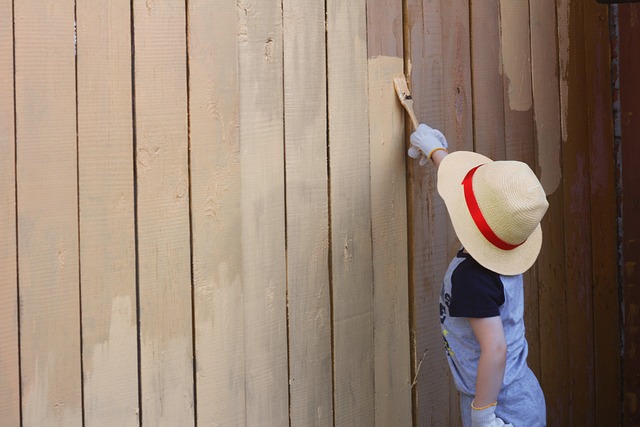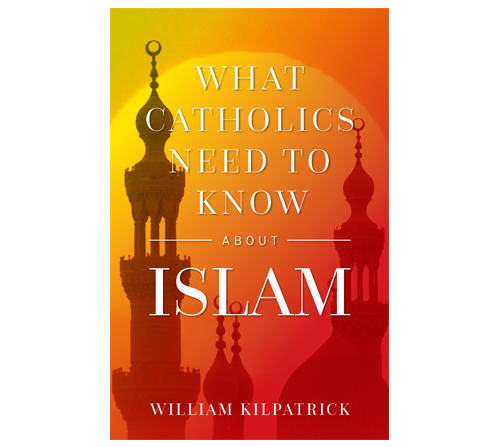A look at why no one tells the truth about Islamic beliefs — but particularly the pope.
In Part 1 of this article, I explained that after 9/11, American and European opinion makers engaged in a massive whitewashing of Islam. What was once the most feared religion in the world was turned by academic and journalistic sleight of hand into a model of moderation and brotherhood that even Quakers could envy.
While public schoolteachers and university professors presented students with a sanitized history of Islam, TV reporters and other journalists quickly developed a protocol for dealing with the many jihad attacks that undercut the preferred narrative.
The main tactic was diversion: avoid talking about Islam and concentrate instead on other factors. The recent vehicular attack in New Orleans is instructive in this regard.
Common Tactics
For example, newspaper headlines portrayed the killer, Shamsud-Din Jabbar, as a “Texas man” and a “veteran” who had once served in the U.S. Army, despite the fact that Jabbar had posted Facebook videos making it clear that his actions were part of a “war between believers and disbelievers.” If Jabbar described himself as a true believer, why didn’t reporters do the same? Unsurprisingly, European media outlets use the same tactics. In England, the press refers to a Muslim terrorist as an “Asian man,” and in France he is a “North African man.”
Still another tactic is to refer to the assailant as a “lone wolf” who appears to have no connection to any larger group, movement, or ideology. The intent here is to portray the jihadist as unrepresentative of Islam. For example, Major Nidal Hasan, the perpetrator of the 2010 Fort Hood massacre, was initially described as a lone wolf until it was revealed that he was in close contact with a high-ranking Al-Qaeda operative.
Another variant of the lone-wolf tactic is to avoid mentioning any similar jihadi terror attacks that occurred in the past lest the reader begin to discern a pattern. Thus, when the New Orleans attack happened, relatively few news stories reported that an almost identical one had occurred a week earlier in Magdeburg, Germany. In that incident, a Saudi man drove a rented car at high speed through a crowded Christmas market, killing six people and injuring 300 others.
Reporters say it’s important to provide context for their stories, but apparently context that puts Islam in a bad light is to be avoided. Luckily, they can count on the average news consumer to be largely ignorant of Islam and the fact that vehicular homicide has been a common practice among Islamic terrorists for many years both in Europe and the U.S. How many remember the most destructive of these: the 2016 Bastille Day attack in Nice, France, when a “Tunisian man” drove a heavy truck through a crowded promenade, killing 86 people and injuring more than 400? Predictably, the Guardian took pains to suggest that the attack had nothing to do with Islam or Islamic terrorist groups. Thus, we are informed that although the Islamic State claimed responsibility for the attack, it could offer no proof that the killer had contact with the group.
Accepting Falsehoods at Face Value
To further strengthen the case that no one should blame the Islamic religion or ideology for incidents like this, the Guardian points out that one-third of those killed in the Nice attack were Muslims. It then goes on to quote one of the injured Muslims, who assured the reporter, “The Qur’an never said kill anyone, quite the contrary.”
Since many passages in the Qur’an do endorse killing unbelievers, one wonders where he got that idea. Perhaps from the Pope? The Guardian reporter mentions that the man “has travelled to meet the pope, stressing the importance of interfaith relations.” No doubt Pope Francis reassured him that “a proper reading of the Qur’an is opposed to every form of violence.”
So an article about a jihadist’s mass murder gradually becomes an article about Muslims as victims, the peaceful nature of the Qur’an, and a meeting with the pope.
The irony is that Pope Francis has done more to cover up for Islam’s dark side than most reporters, and certainly more than any other Catholic leader. Whereas the Second Vatican Council merely drew attention to supposed similarities between Islam and Christianity, Francis draws a moral equivalence between the two faiths. When asked about the assassination of Fr. Jacques Hamel, a French priest who was murdered in 2016 by two Muslim jihadists who attacked his church in Normandy, Francis pointed out that Catholics also have killed people and cited a recent news story about a Catholic man who had murdered his girlfriend.
What Francis failed to note is that the Islamists who killed Hamel were acting in accordance with their faith, while the Catholic who murdered his girlfriend was violating the teachings of his. This simplistic conception of religion pops up almost every time Francis addresses interfaith issues. Although Francis is a fan of diversity, he seems to believe that all religions are basically the same. Thus, the joint Statement on Human Fraternity he and Sheik Amed Al Tayeb signed in Abu Dhabi portrays both Islam and Christianity as humanistic faiths with an equal commitment to the values of “peace, justice, goodness, beauty, human fraternity and coexistence.” The document also condemns terrorism but denies that it has anything to do with religion, although “incorrect interpretations of religious texts” may be a causative factor.
Sowing Confusion
The Abu Dhabi Document left many Christians confused, but Francis pushed ahead with his one-world-religion agenda.
- He told Muslim immigrants in Italy that they should seek meaning in the Quran.
- He has told other groups that conversion is unnecessary because all religions lead to God.
- He urged European nations to open their borders to mass immigration, knowing full well that this policy had already led to increased Muslim violence against Christians and Jews.
- Moreover, Francis has shown more concern over the plight of North African Muslim migrants who face the dangers of crossing the Mediterranean Sea than he has over the plight of sub-Saharan African Christians who are massacred by the thousands each year. Massacred by whom? The answer is Muslim jihadists, but you would never know it by listening to Francis. Instead, he studiously avoids implicating Islam or Muslims in these crimes.
In short, ever since the beginning of his papacy, Francis has been covering up for Islam. Like the reporter who describes an Islamic jihadist as a “Texas man,” Francis draws our attention away from the more problematic aspects of Islam and focuses instead on the commonalities between Christians and Muslims. Indeed, as Francis sees it, Christians and Muslims share so much in common that there’s no need to convert Muslims to Christianity; rather, says Francis, Muslims only need to go deeper into their own faith.
Raising It to an Art Form
As I said, this tendency to look at Islam through rose-colored glasses goes all the way back to the Second Vatican Council and the publication of Nostra Aetate. The Council fathers seemed intent on making Islam look just like Catholicism. But Francis has managed to bring the effort to a whole new level. Most recently, he knelt in prayer before a “Palestinian Jesus” swaddled in a black and white keffiyeh — the symbol of the Palestine Liberation Organization.
The unfortunate effect of these efforts to put a Christian face on Islam is that Christians have become complacent about the threat from Islam. The attempt to protect Islam from criticism has left Christians and others unprotected and unprepared.
Unprepared for what, you ask? Well, for events like the Bourbon Street massacre in New Orleans, the Bastille Day truck massacre on the Riviera, the Pulse Nightclub massacre in Orlando, and the 9/11 attacks on New York and Washington.
These attacks will continue and will almost certainly increase because those who plan them realize that we have no understanding of what motivates them. Even those who do understand seem to have taken a self-imposed vow of silence.
Our officials and authorities are reduced to uttering boilerplate sentiments about “standing strong” and “defending our values.” For example, after the New Orleans attack, U.S. Rep. Troy Carter (D-LA) said the community “will rise again stronger and more united.” United against what, though? Pick-up trucks? Hijacked airplanes? Knife attacks? Texas men?
Maybe we’d do better to pay attention to the message Shamsud-Din Jabbar left for us — namely, that this is about a “war between believers and disbelievers.”
This article originally appeared in the January 15, 2025 edition of The Stream.
Pictured above: Whitewashing a fence
Photo credit: Pixabay


